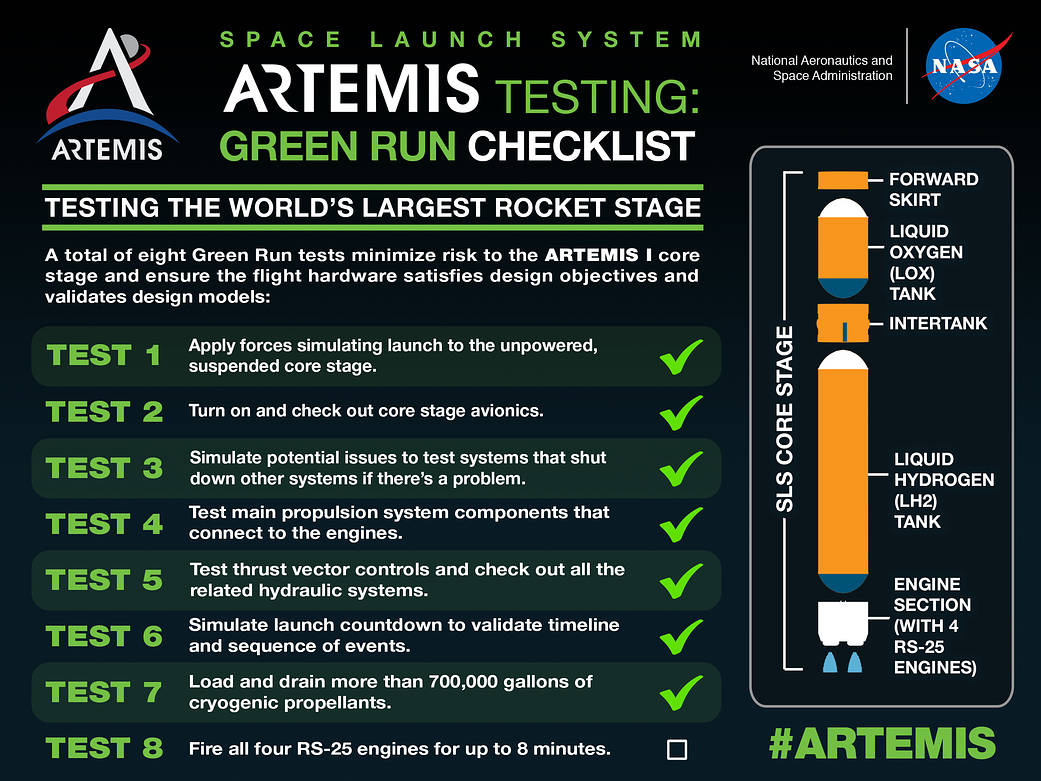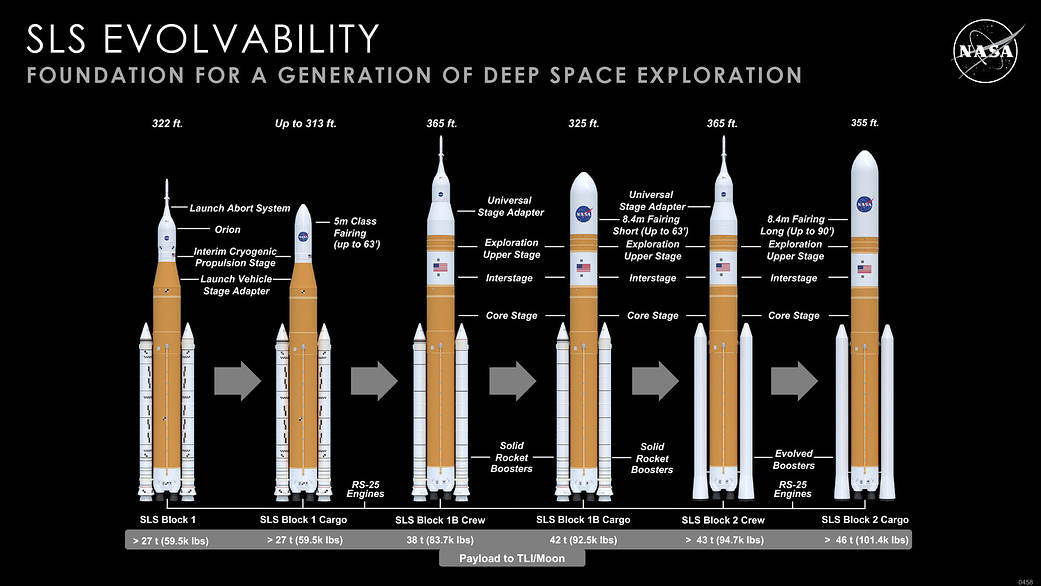Today, at around 4:30 pm local time (CST), NASA has achieved a major milestone with the development of the Space Launch System (SLS) – Heavy Launch System that they will use to send astronauts to the moon and manned missions to Mars. As part of prof Hot fire green run test, All fours RS-25 engines On-stage base SLS was launched once as part of the first integrated top-down test of stage systems.
This test is the last hurdle in the eight-step verification process before the base stage is mated with Solid Rocket Boosters (SRBs) and sent on its first flight around the moon (Artemis I) – which is currently scheduled to happen sometime in November 2021.
The event took place at Stennis Launch Center near St. Louis, Mississippi, and was broadcast live via NASA Live. NASA has also posted regular updates (and continues to do so) at Blogs of NASA Artemis the page. The fire test began at 04:27:51 PM CST (02:27 PDT; 05:27 EST) igniting Engine 1, followed by engines 3, 4, and 2 – which were separated by a few hundred parts From secondly.
The total test fire lasted just over a minute, with the engines stalled at 4:29:07 CST (total burn time around 76 seconds). This was less than the 8 minutes (480 s) that the ground controllers were aiming for as it was estimated that a burn of 485 to 493 seconds would be required to simulate the launch. They also planned to run two 30-second engine tests of the engine that would simulate flight steering commands.
At this time, the exact cause of the miscarriage has not been announced. But according to A. Just published update On the NASA Artemis blog page, the shutdown occurred due to a breakdown of robotic safety systems:
All four RS-25 engines successfully fired, but testing stopped early after about a minute. At this point, the test was fully automated. During the shooting, the software on board behaved appropriately and proceeded to safely shut down the engines. „
However, even in just over a minute, the test was largely successful. Not only was this the first time that the four RS-25 engines had been powered together, but the operation also validated several major systems and allowed mission controllers to collect data from the base stage as many of their combined components worked together.
„During the test, the fuel tanks were pressed, and this data will be valuable as the team plans the path forward,“ the NASA statement adds. „In the coming days, engineers will continue to analyze the data and will be examining the base stage and the four RS-25 motors to determine next steps.“

As noted, this was the last step in Green Run, designed to test new devices (also known as “Green”) and prepare the entry-level primary for service. The first three steps consist of simulating launch conditions on an unpowered base stage and operating the avionics. The fourth and fifth steps involve testing various engine components, such as the drive system components, the thrust vector controls, and the hydraulic system.
The sixth and seventh steps involve setting a launch schedule and simulating a countdown, followed by a loading test where approximately 2.65 million liters (700,000 gallons) of propellants are loaded and drained from the base stage. The eighth and final test is the hot fire test (also known as the „wet dress rehearsal“) in which the primary stage is fully loaded with fuel and fires a steady fire in place – in this case, on the B-2 test bench in Stennis.
The maximum thrust that the four RS-25 engines can generate during launch and ascent is over 900,000 kg (2 million lb) or approximately 8,900 kt of thrust. For hot fire tests on the B-2 test stand, the RS-25 engines will peak at 725,750 kg (1.6 million lb) or 7,117 kN of thrust, which is the maximum thrust it will generate at sea level (on the launch pad) .
Once the test is complete, the base stage will be mated with two consumable solid rocket boosters (SRBs) like the space shuttle. Together, they will be used for all SLS missile configurations, which are grouped according to two blocks. For Block 1, The SLS will be able to generate 4 million kg (8.8 million lb) of propulsion and deliver 24.5 to 38 metric tons (27 to 42 U.S. tons) of crew or payloads to orbit or the moon.

For Template 2, The SLS will be able to generate 5.4 million kilograms (11.9 million lbs) and are geared to deliver 39 to 41 metric tons (43 to 46 US tons) or more into orbit or the moon. In these latter configurations, the SLS will be the most powerful rocket built by NASA since the Apollo era and the venerable missile’s retirement. Saturn V Rocket. Likewise, NASA hopes this rocket will be the backbone Artemis projectNASA’s program to send the „first woman and next man to the moon.“
It is also central to their long-term vision of space exploration, which includes deployment of elements Moon gate In orbit and the base camp of Artemis on the surface of the moon. This will allow for a „sustainable lunar exploration program“ and preparations for „Moon to mars“Missions.
You can watch the full event via NASA Live (see below). Stay tuned for the post-test panel discussion, which will begin at 4:30 PM PDT (7:30 PM EST).
Further reading: NASA

„Total Social Media Ninja. Introvertiert. Schöpfer. TV-Fan. Preisgekrönter Unternehmer. Web-Nerd. Zertifizierter Leser.“

